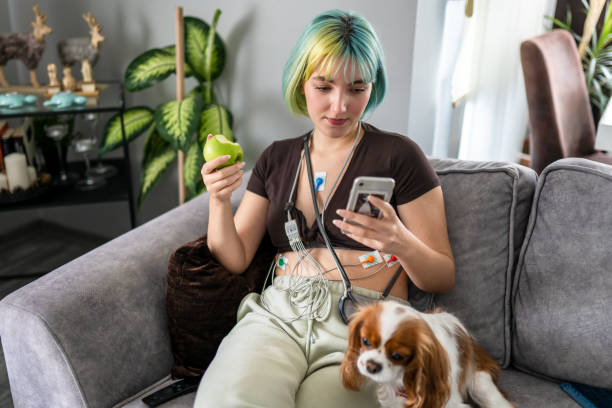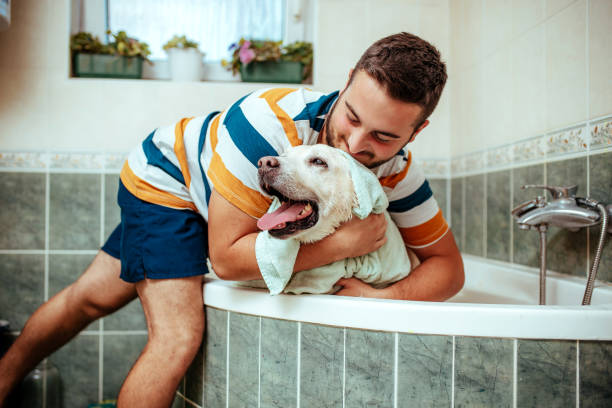Grooming your dog at home can be an enriching experience for both you and your furry friend. Not only does it keep your pet looking their best, but it also contributes significantly to their overall health and well-being. Regular grooming helps to prevent matting, reduces shedding, and allows you to monitor your dog’s skin and coat condition. This comprehensive guide will walk you through how to groom a dog at home, covering everything from necessary tools to techniques and tips for a successful grooming session.
Understanding Your Dog’s Coat
How to Groom a Dog at Home: Know Your Dog’s Coat Type
The first step in how to groom a dog at home is understanding the specific needs of your dog’s coat. Dogs have various coat types, including short, medium, and long hair, each requiring different grooming techniques. Short-haired breeds, such as Beagles and Boxers, generally need less frequent grooming than long-haired breeds like Golden Retrievers and Maltese, which require more regular attention to prevent tangling and matting. By recognizing your dog’s coat type, you can select the right tools and establish a grooming schedule tailored to their needs.
The Importance of Regular Grooming

Regular grooming serves several vital purposes beyond aesthetics. It helps to remove dirt, debris, and loose fur, which can contribute to skin irritations and infections if left unchecked. Moreover, grooming sessions are an excellent opportunity for you to inspect your dog’s skin for any abnormalities, such as lumps or signs of infection. Regular brushing also stimulates the skin, promoting healthy hair growth and distributing natural oils, which can keep your dog’s coat shiny and healthy. Understanding the importance of grooming can motivate you to incorporate it into your regular routine.
Essential Grooming Tools
How to Groom a Dog at Home: Gathering the Right Supplies
To groom your dog effectively at home, you’ll need to gather some essential grooming tools. A basic grooming kit should include brushes, combs, clippers, nail clippers, and dog shampoo. For long-haired dogs, a slicker brush is ideal for detangling, while a bristle brush can help short-haired breeds maintain a healthy coat by removing loose fur. If your dog needs haircuts, investing in a high-quality set of clippers will make the task more manageable. Additionally, having specialized nail clippers and a good quality shampoo designed for dogs is crucial for maintaining their hygiene.
Additional Accessories for Grooming
In addition to the basic tools, consider incorporating some helpful accessories into your grooming routine. Grooming gloves can make brushing easier and more efficient, particularly for short-haired dogs. A grooming table can provide a stable and comfortable surface for both you and your dog, allowing you to perform grooming tasks at a suitable height. These accessories can streamline the grooming process, making it less stressful for both you and your pet.
Preparing for the Grooming Session
How to Groom a Dog at Home: Creating a Calm Environment
Setting the right atmosphere is key to a successful grooming session. Choose a quiet, well-lit area of your home where your dog feels comfortable. If your dog tends to be anxious, you might want to play soothing music or use calming scents to help them relax. Ensure that the surface is non-slip to prevent accidents during the grooming process. Creating a peaceful environment can help make grooming a positive experience for your dog.
Bathing Your Dog
Bathing is a critical aspect of grooming that should not be overlooked. Before starting the bathing process, brush your dog’s coat to remove tangles and mats. When it’s time to wash, use lukewarm water and a dog-specific shampoo that suits your pet’s coat type. Avoid getting water in their ears and be diligent in rinsing thoroughly to remove all soap residue. Once the bath is complete, use a towel to dry your dog or, if they are comfortable, a pet-friendly dryer can help speed up the drying process.
Brushing Techniques
How to Groom a Dog at Home: Effective Brushing Methods
Brushing your dog’s coat is one of the most essential parts of grooming. For long-haired breeds, start with a slicker brush to gently detangle the hair, working from the ends toward the roots to avoid pulling. For short-haired breeds, a bristle brush will help remove loose hair and distribute natural oils evenly. Always brush in the direction of hair growth and be gentle, as this will help your dog feel more comfortable. Regular brushing not only keeps your dog looking great but also promotes healthy skin and coat.
Dealing with Mats and Tangles
Encountering mats and tangles is common, especially with long-haired breeds. If you come across a mat during brushing, use a dematting tool or your fingers to gently separate the hair. Be cautious and patient; pulling too hard can hurt your dog. For particularly stubborn mats, you may need to use scissors, but be very careful not to cut the skin. Regular brushing can significantly reduce the occurrence of mats, making future grooming sessions easier.
Nail Care

How to Groom a Dog at Home: Trimming Nails
Nail trimming is often a challenging aspect of grooming, but it is essential for your dog’s health and comfort. Overgrown nails can lead to pain and mobility issues, so it’s important to keep them trimmed. Use high-quality dog nail clippers and trim just the tip of the nail to avoid cutting into the quick, which is painful and can cause bleeding. If you are uncertain, consult your veterinarian for guidance. They can demonstrate the correct technique, helping you gain confidence in this aspect of grooming.
Monitoring Nail Length
Regularly check your dog’s nails to ensure they are not becoming too long. Ideally, you should trim your dog’s nails every three to four weeks, though this can vary based on their activity level. Dogs that walk on hard surfaces may naturally wear down their nails, while those that primarily walk on grass may require more frequent trims. Keeping your dog’s nails at an appropriate length is vital for their comfort and mobility.
Ear and Teeth Care
How to Groom a Dog at Home: Cleaning Ears
Ear care is another important aspect of dog grooming that is often overlooked. Regularly check your dog’s ears for signs of dirt, wax buildup, or infection. Use a gentle ear cleaner made specifically for dogs and a cotton ball to clean the outer part of the ear. Avoid using cotton swabs, as they can push debris further into the ear canal and cause damage. By including ear cleaning in your grooming routine, you can help prevent infections and ensure your dog stays comfortable.
Maintaining Dental Hygiene
Dental health is critical for your dog’s overall well-being. Regularly brushing your dog’s teeth with toothpaste formulated for dogs can help prevent plaque buildup and dental issues. Aim to brush your dog’s teeth several times a week, and consider offering dental chews that can help keep their teeth clean between brushings. A strong dental hygiene routine can prevent costly vet visits and keep your dog healthy.
Final Touches in Grooming
How to Groom a Dog at Home: Wrapping Up
After you have completed all aspects of grooming, take the time to give your dog a thorough inspection. Check for any missed spots, tangles, or signs of irritation. Throughout the grooming session, offer plenty of praise and treats to reinforce positive behavior. Ending on a positive note will help your dog associate grooming with good experiences, making future sessions easier.
Establishing a Grooming Schedule
To maintain your dog’s grooming needs effectively, establish a grooming schedule. This should outline when to brush, bathe, trim nails, and clean ears. Regular grooming not only keeps your pet looking their best but also allows you to monitor their health closely. Consistency is key to ensuring that grooming becomes a seamless part of your dog care routine.
Conclusion
Learning how to groom a dog at home is an invaluable skill that enhances your pet’s health and happiness. By understanding your dog’s coat type, using the right tools, and following a consistent grooming routine, you can keep your furry friend looking and feeling their best. Regular grooming not only prevents health issues but also strengthens the bond between you and your dog. With patience and practice, grooming can become a rewarding part of your pet care routine that both you and your dog enjoy.
FAQs
Q: How often should I groom my dog at home?
The frequency of grooming varies depending on your dog’s coat type and needs. Long-haired breeds usually require grooming several times a week, while short-haired breeds may only need grooming once a week. Bathing can generally be done monthly or as necessary, depending on your dog’s lifestyle and environment.
Q: What should I do if my dog is nervous during grooming?
If your dog shows signs of anxiety during grooming, create a calm atmosphere by using soothing music or treats. Break the grooming process into smaller, manageable sessions to help your dog adjust. Gradually increase the duration as your dog becomes more comfortable with the grooming routine.
0 Comments